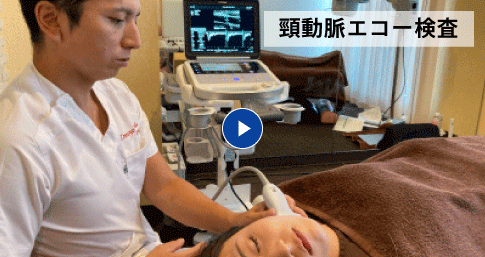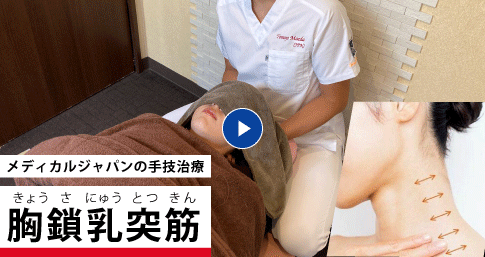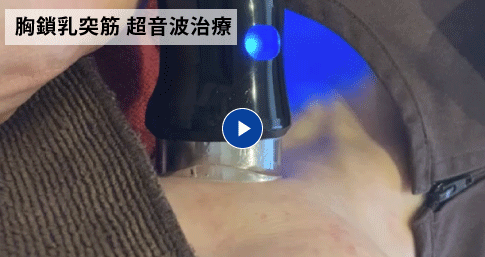headache
What is a Headache?
A headache is a general term for pain in a part or the entire head. This includes pain at the boundary of the back of the head and the neck, as well as pain behind the eyes.
Like fever or stomach pain, headaches are a symptom, but when headaches occur chronically or as repeated attacks, it is treated as a medical condition known as “headache disorder.”
Many people suffer from headaches daily, commonly referred to as “chronic headache sufferers.” It is important to understand the conditions under which headaches are likely to occur and how to manage the pain, developing your own coping strategies. On the other hand, severe headaches that feel different from usual may indicate a hidden medical condition. First, let’s understand the mechanisms and causes of headaches, and how to distinguish them.
4 in 10 Japanese People Suffer from “Headaches”
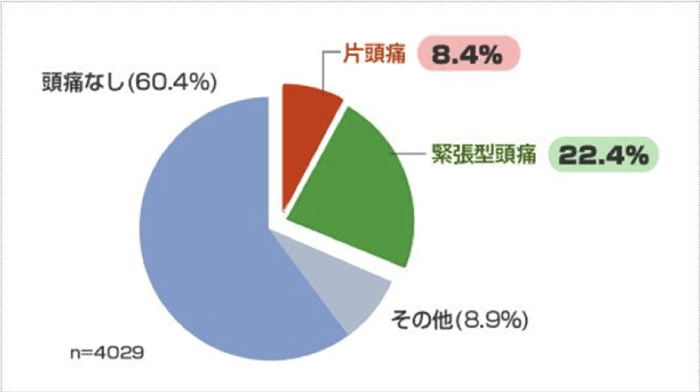
Data shows that about 10% of new outpatient visits are due to headaches.
It is said that one in three to four Japanese people (about 30 million) suffer from headaches, with 22 million having tension headaches, 8.4 million experiencing migraines, and 10,000 suffering from cluster headaches.
Furthermore, headaches caused by conditions like subarachnoid hemorrhage occur in about 10,000 to 30,000 people annually.
Globally, at least 40% of people are said to experience headaches that interfere with daily life.
Women are more likely to report headaches than men, with 60% of tension headaches and 80% of migraines occurring in women.
One type of headache that women frequently report is related to PMS (premenstrual syndrome). This is thought to be caused by a decrease in estrogen during menstruation, which may affect serotonin levels and make migraines more likely.
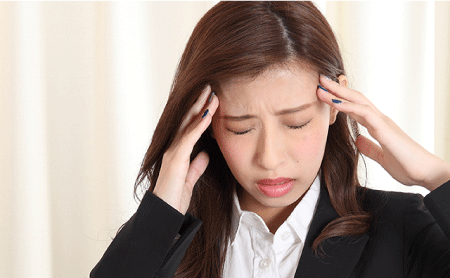
Classification and Causes of Headaches
Headaches are classified into “Primary Headaches” and “Secondary Headaches”
Most headaches that people experience regularly are “primary headaches,” which have no underlying disease causing them. For those who frequently suffer from headaches, there may be times when stress, lifestyle habits, or posture trigger the pain, and they may feel, “Ah, this headache is just like the one I had before.”
On the other hand, headaches caused by diseases or other underlying conditions are called “secondary headaches.” Some conditions that can lead to secondary headaches and require proper medical treatment include subarachnoid hemorrhage, brain tumors, chronic subdural hemorrhage, hypertensive encephalopathy, sinusitis, and depression.
Chronic Headaches (Primary Headaches)
Primary headaches can be broadly classified into three types: migraines, tension-type headaches, and cluster headaches. Each type has different triggers and ways to manage the pain. It’s important to understand which type of headache you have and take the appropriate measures for it.
About one-third of the Japanese population suffers from chronic headaches, which can be classified into three main types:
Tension-type Headache
The most common type of primary headache is tension-type headache.
It starts with a sensation of heaviness or pressure, or a tightening pain centered around the back of the head, temples, or forehead, which gradually persists for a while. Some people may become sensitive to light or sound, but unlike migraines, nausea or vomiting does not occur, and the pain does not worsen with movement. The pain intensity is mild to moderate, and it usually does not interfere with daily life.
The main cause is believed to be poor circulation due to muscle tension in the head, neck, and shoulders. It is also thought that stress and other forms of nervous tension can trigger this headache. Additionally, some people may experience a mixed type of tension-type headache with migraines.
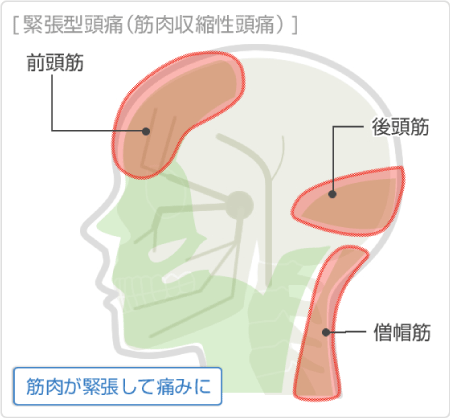
Possible causes of this headache include the following:
- Stress (physical and mental)
- Temporomandibular joint disorder (abnormality in the jaw joint)
- Maintaining the same posture for a long time (e.g., looking down)
- Lack of exercise
- Eye strain
Migraine
A migraine is a headache where one side (or both sides) of the head throbs in a pulsing manner.
It may be accompanied by nausea, vomiting, and symptoms such as sensitivity to light and sound. The pain is intense and, without treatment, can last anywhere from 4 to 72 hours. The pain worsens with physical activity or bathing. Although the exact cause is not clear, it is believed that some kind of stimulus leads to the activation of the trigeminal nerve (a nerve that directly extends from the brain), causing a chain reaction that results in blood vessel dilation and inflammation.
Before a migraine occurs, there may be warning signs such as seeing flashing lights or experiencing dizziness. Migraines are more common in women in their 20s to 40s, and they are often triggered around menstruation or shortly before or after. During pregnancy, many women experience a temporary reduction in migraine symptoms, but about half of them may relapse about a month after delivery.

Recently, there are effective medications with medical ingredients, so it’s recommended to seek consultation from a specialist. However, it’s important to be cautious because migraines can sometimes be mistaken for more serious conditions such as subarachnoid hemorrhage.
Possible causes of this headache include the following:
- Stress (physical and mental)
- Fatigue
- Hunger
- Alcohol consumption
- Menstruation
- Changes in weather
- Lack of sleep (or oversleeping)
- Crowds or loud noises
Cluster Headache
A cluster headache is a type of headache that occurs on one side of the head, often accompanied by abnormalities in the same side’s eye, nose, and ear.
The exact cause is not well understood, but it is believed to be related to the hypothalamus in the brain.
Cluster headaches are characterized by intense pain that starts around one eye and spreads to the temples (frontal and temporal regions), accompanied by symptoms such as eye redness, tearing, nasal discharge, nasal congestion, and drooping eyelids. The pain attacks can occur 2 to 8 times a day and persist for several days to 3 months (cluster period). Afterward, a period without headaches may follow, but another cluster period may return (episodic cluster headaches) or the cluster period may continue year-round (chronic cluster headaches).
Cluster headaches usually occur in people aged 20 to 40, and they are more common in men. However, in recent years, the gender gap has been decreasing. The mechanisms behind the pain are thought to involve blood vessel dilation around the eye, causing congestion and inflammation, or an overactive trigeminal nerve extending to the eyes, upper jaw, and lower jaw.

These headaches often occur during sleep, waking the person up with intense pain. Possible causes of this headache include the following:
- Alcohol consumption
- Smoking
- Use of vasodilators
- Changes in weather
General Treatment Methods
Generally, headache treatment involves symptomatic treatments such as medication.
However, long-term use of these medications can lead to the body becoming accustomed to them, resulting in reduced effectiveness, or a “vicious cycle” where the medicine wears off → the patient takes more medication, leading to “medication overuse headache.” Caution is required. Additionally, drinking alcohol while on headache medication can cause stomach irritation or, in some cases, result in the medication transforming into a toxic substance in the body.
In cases where brain disorders are present, treatment to address the underlying cause will also be performed.
Medical Japan’s Western Medicine Approach
Headaches can be triggered by various factors, so massage alone cannot address the root cause. It is also important to exercise to make the neck and shoulder muscles more flexible and stronger, and to maintain correct posture to avoid strain on the neck and shoulders. Additionally, if initial treatment is incorrect, symptoms may worsen. It is crucial to carefully examine not only the pain but also physical and mental stress, diet, and lifestyle habits.
Autonomic Nerve Diagnosis
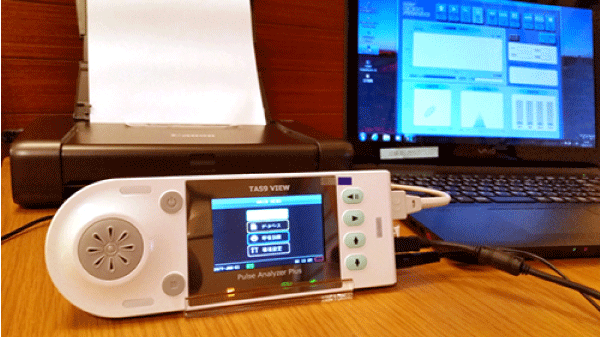
At Medical Japan, we conduct an autonomic nerve analysis to accurately assess headaches. An imbalance between the sympathetic and parasympathetic nervous systems can lead to various symptoms, preventing the nerves from functioning properly. Based on the diagnosis results, we provide precise treatment approaches and strategies.
[Realign Core] [Realign Balance Shoes]
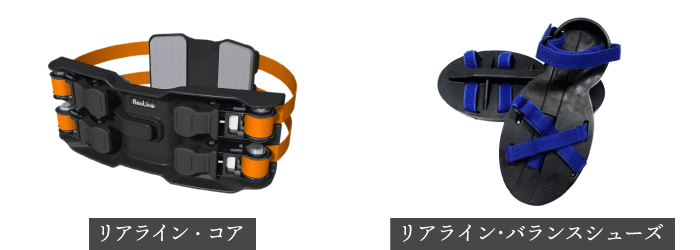
Realign Core is an exercise aid designed to correct the misalignment of the pelvis and thoracic cage, which are the core of the body. Misalignment (asymmetry) in the pelvis and thoracic cage can negatively affect not only the spine but also the shoulder, neck, and hip joint function.
Tri-Dimensional Dynamic Wave Electric [ES530]
Using the tri-dimensional dynamic wave of ES-530, we aim to activate cells. This facial care method stimulates the skin and muscles by crossing medium-frequency currents through three electrodes placed on the face. By moving facial muscles (both commonly used and unused) with the machine, we activate cells from deep within the body to the surface, reaching even deep areas that cannot be touched by hands (fingers).
By carefully addressing the various factors causing headaches, we can improve your work, private life, and overall quality of life for the future.
At Medical Japan, we will also provide stretches and exercises that can be performed at home to help alleviate headache symptoms. We will also guide you in dietary and nutritional advice, posture correction, and exercise coaching to prevent recurrence. Whether you’re experiencing headaches for the first time, have been suffering from them for a long time, or are seeing recurring issues even after treatment, we invite you to try the treatments at Medical Japan.
Medical Japan’s Traditional Medicine Approach (Functional Headache)
Relieves muscle tension and improves circulationTreatment is applied to areas of pain, muscle tension, tenderness, and hardening in the head, neck, and shoulder regions.
[Prescription Example] Ten-Chu, Fuu-Chi, Kakei, Ken-Ro
Treatment is applied to areas of tenderness and hardening in the cranial blood vessels.
[Prescription Example] Ten-Chu, Kan-Kotsu, Wa-Ryo, Yo-Haku
*For migraine and cluster headaches, treatment to guide blood flow to other areas will also be performed to prevent worsening symptoms due to increased circulation.


From the perspective of traditional Chinese medicine, headaches are believed to be caused by: ① External pathogenic factors, and ② Internal injuries (imbalances or poor circulation in the body). In addition to the Western medical considerations, we also examine traditional Chinese medicine causes and provide treatment.
Intervention for Improving Cerebral Blood Flow Only Available at Medical Japan, Related to Headaches
(Note 1) A condition where various symptoms are reported without a clear diagnosis, even after consultation or tests.

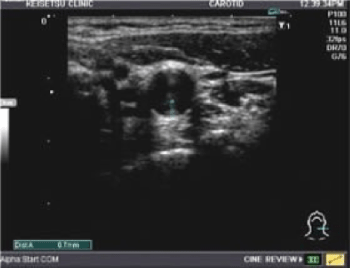
When carotid artery compression occurs, smooth blood flow to the brain and auditory organs is hindered.
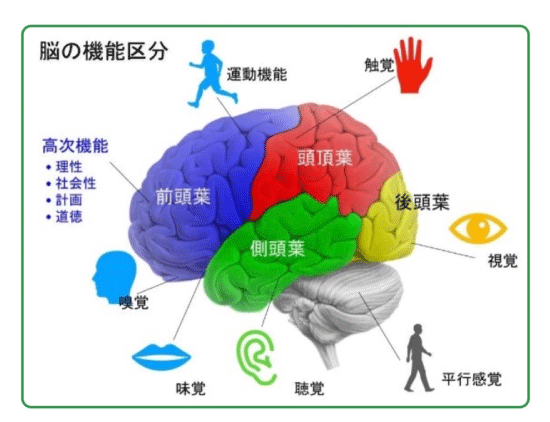
The brain is divided into various regions, each responsible for different functions. For example, the cerebral cortex is subdivided into 52 regions based on differences in cellular structure. This functional localization is present throughout the central nervous system, and in the spinal cord, each segment controls sensory and motor functions for parts of the body such as the hands and feet.
When oxygen supply to the brain decreases, the delivery of nutrients to each cell is hindered, which can lead to functional decline.
At Medical Japan, we use programs including echo, ultrasound medical devices, manual therapy, and rehabilitation exercises to improve headaches.
Examination Using 2D Echo (Ultrasound Examination)
We perform examinations using 2D Echo (ultrasound examination). 2D Echo is excellent for observing soft tissues such as muscles, tendons, and ligaments. In cases where pain is caused by trigger points, muscle fibers, ligaments, or tendons that cannot be detected by X-rays or CT scans, 2D Echo (ultrasound examination) is highly effective.
Approach to Sternocleidomastoid Muscle Treatment
The neck contains muscles and nerves intricately intertwined, with thick blood vessels supplying nutrients to the brain. By performing breathing exercises and posture correction, we aim to expand the range of motion and improve flexibility. To achieve early improvement, we provide individualized counseling, customized treatments, and tailor-made therapies for each person.
Approach to Sternocleidomastoid Muscle Ultrasound Treatment
Ultrasound is directed at a pinpoint location either with a non-thermal or thermal effect.
Ultrasound → Increased blood flow in the spinal artery and arterial plexus due to deep heat.
Additionally, we use a combination of high-frequency therapy and ultrasound therapy equipment (Astron) to relax muscle tension with high-frequency waves, potentially suppressing pain transmission.
[Self-Care] Sternocleidomastoid Muscle Care at Home
When performing self-care at home, it is important to follow the following precautions:
*Changes in effect: If pain increases or new symptoms appear, stop immediately and consult a healthcare professional.
*Take time: It is important to take your time. Rushing through it may prevent the muscles from relaxing properly, leading to ineffective results.
*Moderate intensity: Excessive intensity may damage the muscles. If you feel pain, reduce the intensity or stop.
Rehabilitation Exercises + Breathing Techniques

Imbalance is not only caused by muscle and bone issues, but a tense body leads to shallow breathing, lowering overall metabolism and potentially causing various symptoms or chronic illnesses. We provide thorough guidance on simple exercises that can be done at home.
Before → After
Rehabilitation Exercises + Breathing Techniques
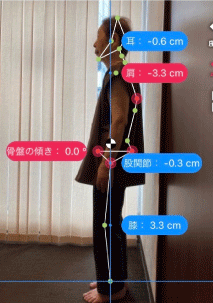
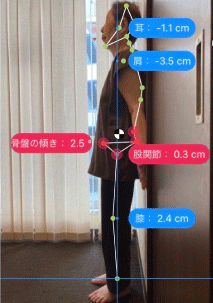
Treatment Methods by Symptom
Endorsed by Physicians
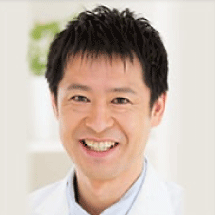

Career & Achievements
Certified Doctor in Internal Medicine by the Japan Society of Internal Medicine, Specialist in Cardiology by the Japanese Circulation Society, Member of the Japanese Society of Hypertension, Certified Diabetes Educator by the Japan Diabetes Society, Certified Industrial Physician by the Japan Medical Association, Certified Specialist in Travel Medicine, Member of the Japanese Society of Allergy, Certified Cardiac Rehabilitation Instructor
Greetings, I am Dr. Ikeda, Director of Tachikawa Clinic.
I have treated and researched lifestyle-related diseases such as hypertension, hyperlipidemia, and diabetes, primarily at university hospitals.
My life’s work has been focused on cardiac rehabilitation therapy for patients after treatment for heart diseases such as myocardial infarction, angina, heart failure, and aortic diseases.
Recovery of the body as a whole, not just from heart disease, is essential for improving the quality of life, and it aligns with the type of medical care we aim for.
In addition to improving current conditions, we also focus on the prevention of future diseases through rehabilitation tailored to body recovery.
I believe that the treatment goals of Medical Japan align with the medical care we strive for.
“To live a high-quality life, health is irreplaceable.”
Health means working on nutrition, exercise, rest, and treatment properly, and it is essential to live with constant awareness of health to prevent illness.
The partnership with Medical Japan, which has been ongoing for 7 years since my previous clinic, is remarkable in that they are committed to community service as part of the co-medical team, with certified national professionals practicing massage and acupuncture tailored to each patient’s condition and symptoms.
The recent development of pressurized training is also based on solid evidence and will contribute to future treatment effects. I am excited about the ongoing efforts of Medical Japan.
I believe that the healthcare provided by Medical Japan can be an excellent support for the health of the community, and I would recommend them as a trusted organization to work with.
*This is a personal opinion.
Tachikawa Clinic
2 minutes walk from Tachikawa Station North Exit, Open on Sundays, Internal Medicine, Cardiology, Diabetes, Gastroenterology, Allergy, Lifestyle Diseases, Vaccinations, Travel Medicine, Smoking Cessation, Health Checkups, and Pediatric Care
Website: https://www.tachikawa-cl.com/
References
Affiliated Organizations
- National Acupuncture and Massage Association
- World Federation of Chiropractic
- Japan Chiropractic Association
- Japan Society of Autonomic Neuroscience
- Japan Society of Oriental Medicine
- Japan Aromatherapy Society
- Japan Approach to Joint Mobility (AKA) Medical Society
Testimonials from Our Patients

When I first came for treatment, I received a headache improvement course, which mainly treated my neck, shoulders, and head. During the treatment, I was advised to improve my diet, and when I reflected on my eating habits, I realized that I had been eating junk food like convenience store meals and fast food. When I was living with my parents, I ate home-cooked meals and had a busy school life, so I hardly ever ate such things, and I didn’t suffer from headaches. Since starting treatment here and becoming more mindful of my diet, I’ve noticed that the intensity of my headaches has gradually decreased. It’s been about 4 months now, and I no longer suffer to the point of needing to take time off work, and I feel like I’m managing to keep it under control.
Although I still carry medication just in case, I’m starting to think that I might not need it soon, and I hope to continue treatment until I can be completely free of headaches.

After getting a measurement of my autonomic nervous system and receiving acupuncture treatment at Medical Japan, the frequency of my headaches gradually decreased, and now I hardly have any headaches at all.
I’m very grateful for the posture corrections and exercises they taught me as well.

It was affecting my daily life, so I sought treatment. I learned that there are different types of headaches, and after getting an autonomic nervous system and blood flow diagnosis, I received precise treatment. The headaches improved significantly after just a few sessions. Additionally, I’ve been taught posture correction and given advice on exercises and stretches to prevent recurrence.




